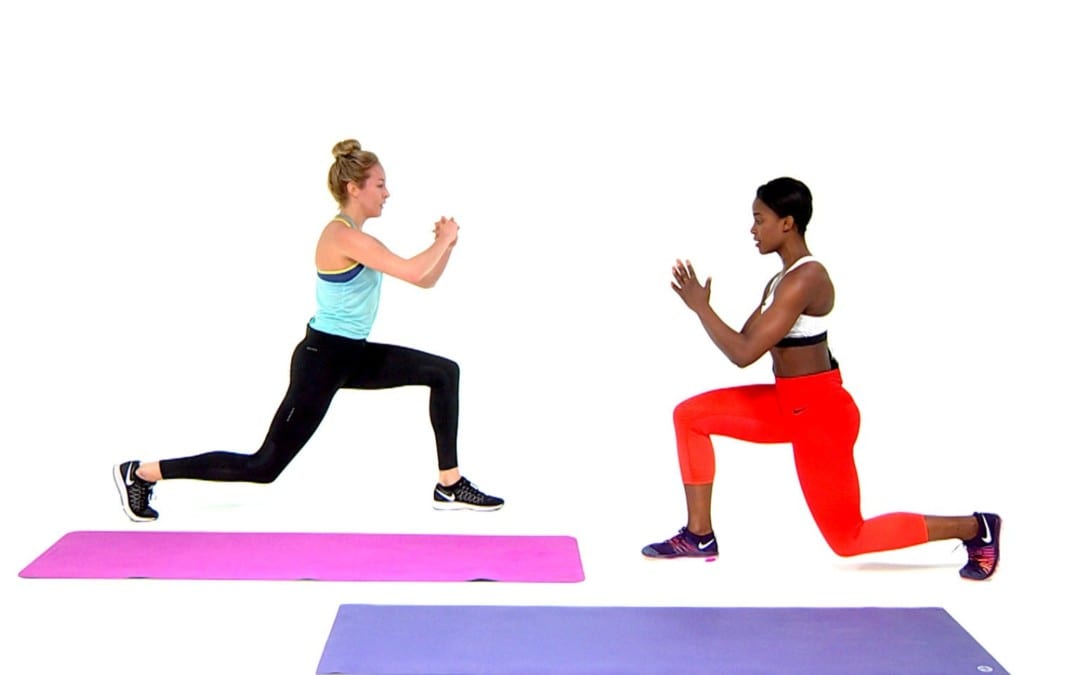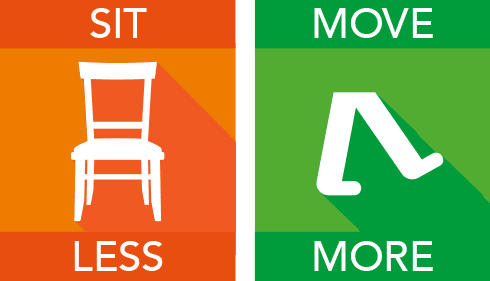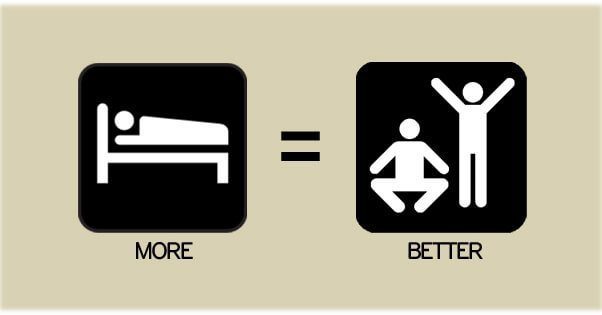Fitness
Back and Spinal Fitness at PUSH as Rx leads the field with a laser focus on supporting our youth sports programs. The PUSH-as-Rx System is a sport-specific athletic program designed by a strength-agility coach and physiology doctor with a combined 40 years of experience working with extreme athletes.
The program is the multidisciplinary study of reactive agility, body mechanics, and extreme motion dynamics at its core. A clear quantitative picture of body dynamics emerges through continuous and detailed assessments of the athletes in motion and under directly supervised stress loads.
Exposure to the biomechanical vulnerabilities is presented to our team. Immediately, we adjust our methods for our athletes to optimize performance. This highly adaptive system with continual dynamic adjustments has helped many of our athletes return faster, stronger, and ready post injury while safely minimizing recovery times.
Results demonstrate clear improved agility, speed, decreased reaction time with greatly improved postural-torque mechanics. PUSH-as-Rx offers specialized extreme performance enhancements to our athletes no matter the age.

by Dr Alex Jimenez DC, APRN, FNP-BC, CFMP, IFMCP | Diets, Fitness
Just a bit of vigorous exercise each day could help some children and teens reduce their risk of developing heart problems and diabetes, researchers say.
The new study looked at nearly 11,600 kids, aged 4 to 18, in the United States, Brazil and Europe.
The investigators found that replacing light exercise with as little as 10 minutes a day of intense activity may provide significant cardiometabolic benefits for young people who have relatively large waists and elevated levels of insulin in their blood. These are factors that put them at risk for developing heart problems and metabolic diseases, such as type 2 diabetes.
“The results suggest that substituting modest amounts of vigorous physical activity for longer-duration light exercise may have cardiometabolic benefits above and beyond those conveyed by moderate activity and the avoidance of sedentary behavior,” lead author Justin Moore said.
Moore is an associate professor of family and community medicine at Wake Forest Baptist Medical Center in Winston-Salem, N.C. He noted that more research is needed because additional factors that contribute to disease risk — such as diet and genetics — need to be taken into account.
“If such studies provide robust results, a relatively brief but intense dose of physical activity — perhaps as little as 10 minutes day, which is certainly feasible for most youth — could turn out to be part of a ‘prescription’ for children to achieve or maintain cardiac and metabolic health,” Moore said in a medical center news release.
The study was published recently in the journal Medicine & Science in Sports & Exercise.

by Dr Alex Jimenez DC, APRN, FNP-BC, CFMP, IFMCP | Fitness, Health, Wellness
Strapless dresses. Destination getaways. Bachelorette parties. Wedding season festivities come with many opportunities to dress up and bare all. Whether you’re looking to get fit for your own special day or trying to sculpt for a BFF’s, this 10-minute HIIT workout from Nike trainer Lauren Williams will do the trick (and then some).
Ready to get your heart rate way, way up? Watch this video for a full demonstration on how you can strengthen and lengthen all over without any equipment. If you can’t watch, the fat-burning workout is described below, too. Get ready to get sweaty!
RELATED: Anna Victoria’s 9-Move HIIT Workout Will Tone Your Entire Body
Squats: Slowly squat down with the feet turned out slightly. This movement helps to open up the hip flexors and get the quads working right off the bat. Continue squatting for 45 seconds.
Plank roll-downs: From standing, roll your body down toward the ground and walk the hands out so you’re in a plank position. Hold for five seconds. Walk hands back toward body and roll back up to stand. Repeat. Continue for 45 seconds.
Side shuffle with high knees: To start getting your heart rate up, quickly shuffle from one side to the other. Take a few shuffle steps to one side and begin to raise knees high, up towards your chest, for three seconds. Shuffle to the other side and repeat the high knees motion. Continue switching off between the two exercises for 45 seconds.
Plank with squat hold: From a high plank position, jump and place the feet flat on the ground so you’re squatting in a chair pose. Hold the squat for three seconds, then jump the feet back to return to high plank. Continue one minute.
Push ups: Complete push-ups with your hands wider than the width of a yoga mat for 45 seconds.
RELATED: Try This Calorie-Torching HIIT Workout from The Fhitting Room
Forearm plank: For an active rest that continues to keep your heart rate up, hold a forearm plank for one minute.
Squat with rotation: From a squat position, jump and turn your body 180 degrees, landing in a squat facing the opposite direction as when you started. Continue rotating from side to side in a squat position for one minute. You’ll burn fat while you strengthen your quads and hamstrings.
Forearm to high plank: From a forearm plank raise yourself up to a high plank (with hands on the ground) and slowly creep your hands out in front of your body slightly. Walk the hands back under the shoulders, lower to forearm plank, and repeat. Continue for one minute. To modify, simply bring the knees to rest on the floor. This move burns out the triceps and also strengthens the core at the same time.
Split squat lunge jumps: Start in a lunge position with the right leg forward, left leg back. Make sure both knees are bent at a 90-degree angle. Hold the lunge for three seconds, then jump to switch the front and back legs. Continue for one minute. The hold in between each jump ensures an extra tough burn.
Mountain climbers from plank: From plank, begin to jog your legs in towards your chest for a mountain climber movement. Make sure to keep your hips in line with your back, so they don’t lift up toward the ceiling. Continue for one minute.
Shuffle with burpee: From a demi squat position, shuffle three steps to one side, then drop the body down to the ground for your burpee. Quickly pop back up before shuffling to the other side and repeating. Continue for one minute.

by Dr Alex Jimenez DC, APRN, FNP-BC, CFMP, IFMCP | Fitness, Health, Wellness
If you�re like most Americans, health is the most important aspect of your life that needs improving. Without adequate health and well-being, you can kiss most of your other goals goodbye. Declining health and vitality rob you of the energy you need to achieve your personal or professional goals.
With that in mind, I�ve created a series of simple practices�the more of these you do, the better and more in charge of your life you�ll feel.
Sit Less, Move More

As humans, we are made to move. This doesn�t mean running around on a daily basis, but rather spending a good portion of our days walking, standing and moving in general. If we don�t, our bodies rebel and our health declines. Movement is not only good for your cardiovascular health, but also for your mental health. Do some form of exercise that significantly raises your heart rate for 30 minutes at least four times a week. Remember, also, to break up your sitting and move frequently during the day.
Get More Sleep

Sleep is often the single most undervalued behavior in our lives�and yet it is the one with the most immediate power to improve our lives in every waking moment. If you�re averaging less than six hours of sleep, aim to get just one more hour a night. It will leave you feeling more physically energized, emotionally resilient and mentally clear.
Eat Less, More Often

Food is fuel, and real food�healthy proteins, vegetables (complex carbohydrates) and fruits �are high-octane fuel. You feel best when you eat in small doses throughout the day, beginning with breakfast. Try for more local and organic fruits and vegetables. Remember, the fresher the food, the more potent its nutrients.
Remove Interference

Chiropractic care can literally change your life, and enable you to live a pain-free life full of energy and vitality. That�s because chiropractic adjustments help reduce or eliminate pressure on your nerves�the same ones responsible for your everyday bodily functions. Chiropractic will help eliminate pain and inflammation, reduce fatigue, and restore normal nerve flow to all your organs, giving you the energy, drive and peace of mind to go out there and live life the way it was meant to be lived.
Renew More

Human beings are not designed to work eight or more hours straight. We�re meant instead to alter between moving (spending energy) and resting (renewing energy). Ideally, take a break every 90 minutes, even if only to spend a minute or two stretching or breathing deeply. It all matters, and it all adds up.
Be Present

The greatest gift you can give someone is your undivided attention. After all, it�s better to be fully present with someone for an hour than physically present, but distracted, for multiple hours. Shut off your phone at a certain time each day, and practice being present with your family and friends.
Gratitude Adjustment

We�re far quicker to notice what�s wrong in our lives than we are what�s right. Gratitude has tremendous power; if it is sincere and heartfelt it makes a big difference to our outlook. To help change this mindset, once a week aim to write a note of appreciation to someone who deserves it, telling the person precisely what you�re grateful for.
Do The Most Important Thing First

Early in the morning (after your coffee), you�re likely to have the most energy, and the fewest distractions. Start your workday by focusing without interruption on the most important or challenging task you can accomplish that day.
Feed Your Mind

Our brains work better if we challenge them, and life becomes more interesting when we do. Reading is, of course, a simple way to learn and grow, but so is building a daily practice around learning a new language, a sport, an instrument, how to fix a car, or learning to draw.
Give Back

Lending a helping hand not only aids others in need, but it�s also very rewarding. Throughout the year, aim to take some time to add value to the world at large by supporting charities, standing up for great causes, or giving back to your community.

Call Today!

by Dr Alex Jimenez DC, APRN, FNP-BC, CFMP, IFMCP | Fitness, Health, Wellness
In case you missed it, yesterday was World Physical Activity Day. The goal? To encourage all of us to get off our duffs and move around more—which is always a good thing. We know that adults who don’t get the recommended amount of exercise per week (at least 150 minutes of moderate-intensity movement) are at a higher risk of diabetes, depression, cancer, and more. Science has also shown that not exercising can raise your risk of heart disease as much as obesity does. But the simplest reason to stay active? It makes you feel good.
Turns out Twitter users are all for working that body too. Here are six of the impressive stats and chuckle-inducing GIFs that were tweeted out yesterday, and made us want to get our sweat on asap.
Yep, even waddling counts as exercise.
But there are endless ways to get your muscles firing.
Here’s an impressive fact, courtesy of London’s Newcomb Library: Walking briskly for just 75 minutes a week can add nearly two whole years to your life.
We love that Cancer Research UK called out dancing and gardening as alternative ways to raise your heart rate. Treadmill who?
No matter what kind of workout we’re talking about, keep in mind that This Girl Can crush it.
Just don’t let this happen to you…
Happy sweating!

by Dr Alex Jimenez DC, APRN, FNP-BC, CFMP, IFMCP | Fitness, Health, Nutrition, Wellness
Governments could boost the consumption of healthy food by making it cheaper, as well as requiring that unhealthier food be more expensive, a new review suggests.
The findings are based on an analysis of 30 studies. Eleven studies looked at what happened when unhealthier foods were taxed. Nineteen studies explored what people choose to eat when subsidies lowered the price of healthier food. The collection of studies found that food prices really do matter.
“Our results show how 10 percent to 50 percent changes in price of foods and beverages at checkout could influence consumers’ purchasing behaviors over a relatively short period of time,” said study co-first author Ashkan Afshin, a former postdoctoral fellow at Tufts University in Boston. He is now at the University of Washington.
Researchers found that consumption of produce jumped by 14 percent for each 10 percent drop in price. A similar increase in consumption occurred when other healthier foods became cheaper. People also became slightly thinner when produce prices went down, the review reported. On the flip side, a 10 percent price increase in sugar-sweetened beverages and unhealthier fast food translated to decreases in consumption by 7 percent and 3 percent, respectively.
“The global food system is causing a staggering toll on human health. And this is very costly, both in terms of real health care expenses and lost productivity,” said study senior author Dr. Dariush Mozaffarian, dean of the Friedman School of Nutrition Science & Policy at Tufts.
“Our findings suggest that subsidies and taxes are a highly effective tool for normalizing the price of foods toward their true societal costs. This will not only prevent disease but also reduce spiraling healthcare costs, which are causing tremendous strain on both private businesses and government budgets,” Mozaffarian said said in a Tufts news release.
The study was published March 1 in the journal PLOS One.
The scope of our information is limited to chiropractic and spinal injuries and conditions. To discuss options on the subject matter, please feel free to ask Dr. Jimenez or contact us at 915-850-0900 . 
Back pain and symptoms of sciatica can affect a majority of the population throughout their lifetime. Research studies have demonstrated that people who are overweight or obese experience more back complications than people with a healthy weight. A proper nutrition along with regular physical fitness can help with weight loss as well as help maintain a healthy weight to eliminate symptoms of back pain and sciatica. Chiropractic care is also another natural form of treatment which treats back pain and sciatica utilizing manual spinal adjustments and manipulations.

by Dr Alex Jimenez DC, APRN, FNP-BC, CFMP, IFMCP | Diets, Fitness
With your Easter feast or Passover repast just around the corner, we’ve asked top nutritionists and dietitians for suggestions on how to make these holiday meals healthier.
“Passover and Easter mark the start of the spring season,” Leah Kaufman, a New York City-based nutritionist tells Newsmax Health. “They traditionally symbolize ‘Rebirth’ and ‘Rejuvenation.’ What better time to think about your diet and health goals than right now, at the beginning of a new season?”
Kaufman notes that both Passover and Easter bring families and friends together for holiday meals that often feature traditional foods that may not be healthy choices.
“Creating healthy meals and snacks even when serving traditional foods can be a creative challenge,” she notes. “Many times these foods may not align with your nutritional goals, but by making simple adjustments, you can continue to eat your favorite holiday foods and not compromise your health.”
For example, Easter is one of the biggest times of the year for ham, market statistics show. But, buyer beware: Many store-bought hams are chock full of sodium and other unhealthy ingredients.
In fact, a single four-ounce portion of the most popular brands contains a whopping 1,700 grams of sodium. That’s 85 percent of the recommended daily intake.
Prepared hams also contain sodium nitrite, a potential carcinogen — as well as sodium phosphate to keep the meat moist, corn syrup, and dextrose, a simple sugar used as a sweetener.
“The takeaway message is that if you don’t want a lot of sodium and preservative as well as extra sugar in your ham, you may want to make your own from scratch or try a healthier main dish such as salmon,” Tara Gidus, an Orlando-based dietician tells Newsmax Health. “That way you’ll be reaping the nutritional benefits of high quality, complete protein with omega-3 fatty acids and important essential vitamins.”
Kaufman suggests another popular Easter favorite may be a better choice: Roast a leg of lamb.
“You’ll still get a lean protein, but without the extra salt and preservatives,” she suggests.
Amy Shapiro, founder of Real Nutrition NYC, tells Newsmax Health that the same caveat applies to a Passover favorite meat: Brisket.
“Lean meats like ham and brisket are great sources of iron, protein and your B vitamins, but be cautious on how they are prepared,” she says. “Brisket can tend to be cooked in heavy sauces which may contain a large amount of salt and sugar.”
On the other hand, eggs are a traditional part of both Passover and Easter — and are a nutritional powerhouse, notes Shapiro.
“Everyone loves a good Easter egg hunt,” she says. “And eggs are great from a nutritional standpoint because they provide a low fat source of protein and contain many vitamins in their whites. For Passover, have an egg to start during the Seder and it will help satisfy your hunger so that you won’t over indulge in heavier fare later in the meal.”
Easter eggs made with dark chocolate provide a sweet treat after the meal that also provides heart-healthy antioxidants.
Matzo bread is a Passover staple for the eight days Jews need to eat “Kosher Passover” food. Although it appears to be a simple cracker, matzo actually contains as many calories and carbs as a normal piece of bread, says Shapiro.
“Try to find a whole wheat brand to increase the nutritional value,” she suggests.
Potatoes are also an important part of traditional Easter meals, says Gidus.
“No Easter brunch is complete without a nice side dish of breakfast potatoes or a hash brown casserole,” she notes. “Potatoes are naturally fat free and surprisingly low in calories if you don’t smother them with high fat sauces.
“White potatoes have more potassium than a banana and contain vitamin C and fiber. Russet potatoes are high on the antioxidant vegetable list and have resistant starch, giving you lasting energy.”
Haroset is a delicious sweet side dish in the Passover meal, typically made with raisins, honey, apples, nuts, cinnamon, and wine.
“This is a great way to eat something sweet without going for candy, cake and ice cream,” notes Shapiro. “But it can have a lot of sugar, so don’t go overboard!”
Gidus recommends adding lots of roasted vegetable side dishes to offer low-calorie options to holiday meals. Asparagus and carrots are excellent, colorful choices.
“Asparagus is an excellent spring vegetable to use in salads or as a side dish,” she says. “Carrots can be also used to make a wonderful carrot cake or carrot muffins to serve as a healthy dessert. You’ll get the benefits of beta carotene, fiber, potassium and iron.”
Kaufman offers this final piece of advice:
“Overall, the holidays are a time to spend with family and friends. Focus on the company you are with rather than the next meal you’ll eat. By engaging in conversation, you’ll decrease the likelihood of over eating.”

by Dr Alex Jimenez DC, APRN, FNP-BC, CFMP, IFMCP | Fitness, Health, Wellness
The gym is filled with tons�of complex machines, all designed to tighten and tone various areas of your body. With so many flashy options to choose from,�chances are, you’ve been overlooking one ultra-versatile piece of equipment: the�TRX suspension trainer. But his seemingly simple item is actually a super effective workout tool. It was designed to add extra challenge to many of your usual go-to exercises, like squats and mountain climbers, to�help your body build strength, balance, flexibility, and core stability.
The best part: It’s totally versatile. While you can find TRX trainers at any gym, you can also use them to get toned just about�anywhere�whether that’s in your home, the beach, or the park�by simply attaching your trainer to a sturdy object overhead (like a tree, for example). Not to mention, it’s compact enough to squeeze into your suitcase, making it perfect for�working out while traveling.
If you’re curious to try out TRX and mix up your usual routine, try giving my 6-move workout a go.
Single-leg squat

Face the anchor point and grab the cushioned handles. Take a couple steps back so there’s plenty of�tension on the suspension trainer. Balancing on your left foot, extend your right leg. Begin to lower into a squat, keeping your right leg extended and your left heel on the ground. Once you’ve hit a 90-degree angle�or as low as you can go with proper form�drive your left heel through the ground returning to a standing position. Do three�sets of eight�reps.
Tam�s Tip: Don�t sacrifice form for depth. Be sure to keep your arms straights at all stages in the squat to prevent using your upper body instead of your legs and glutes.
RELATED:�These 2 ‘Microworkouts’ Are Super Short and Majorly Effective
Reverse lunge

Bring the handles together and place your right foot into the cradle. Walk out a few steps while balancing on your left leg. Begin to lower down into a lunge, hold for one second, and then return to standing. Do four�sets of 10 reps.
Tam�s Tip: Make sure that you aren�t hinging at your hips, and really using your legs and glutes to get into the lunge. Avoid pushing off your front leg when returning to a standing position.
Pull-ups
Adjust the handles so that they are at their highest setting. Grab the handles, making sure that your hands, shoulders and hips are aligned. Keep your feet flat on the ground and pull your body up as high as you can, and then lower down to the starting position. To make it harder, straighten your legs, with your heels on the ground and pull yourself up, keeping your shoulders down and back. If you want more of a challenge, pull your entire body off the ground in one fluid movement (as shown above), and then lower back down to the starting position. Start with three�sets of 10 reps for the beginner/intermediate variations. Advanced: three�sets of four�reps.
Tam�s Tip: Be sure that your hands, shoulders and hips are aligned after every rep.
RELATED: 4 Steps to Slim, Sculpted Arms
Single-arm row

Bring the handles together and grab them with your right hand. Lean your body backward, with your feet closer�to the anchor point in front of you. Then, while engaging your core and lat, pull your body up in one fluid movement. Straighten your right arm, lowering down to the start position. Do three�sets of 12 reps.
Tam�s Tip: To make this exercise more challenging, walk your feet closer to the anchor point, increasing the amount of body weight you are pulling. You can also try standing�with a narrow stance to make this exercise more unstable.
Mountain climber

Place your feet into the foot cradles with your toes facing down. Walk your hands out to a plank position. Drive your right knee forward, followed by the left. Repeat.
Tam�s Tip: Try to avoid sawing (each strap changing levels) by maintaining even pressure on the foot cradles.
Pikes

Place your feet into the foot cradles, toes facing down. Walk your hands out into a plank position. From here begin to raise your hips up, engaging your core, creating a upside down �v�. Lower your body back down for one rep. Do 3 sets of 15 reps.
Tam�s Tip: Imagine there is a string attached to your tailbone pulling you up and down. Avoid a dip in your lower back by pulling your belly button in and engaging your core.






























